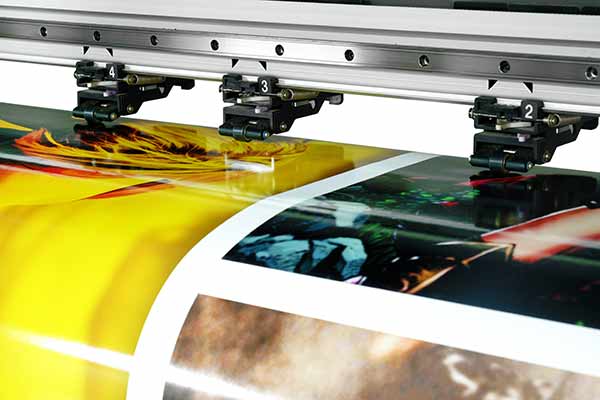Which is better for printing, a JPG (JPEG) or TIF (TIFF)? Most would say a TIF. But, is that always the case? When printing your images there are the two primary formats we recommend and we do accept a handful of other file types for ordering prints however many are only optimal under the right circumstances that may not necessarily be ideal for art and photo printing.
Edit Friendly vs Print Friendly
In the digital image world, there many technical terms to describe things like image compression, artifacting. For me, I like to simplify things and call files “Print Friendly” and “Edit Friendly”. “Print Friendly” formats are not recommended for editing and re-saving an image much more than once otherwise you can see some noticeable quality loss in the image but are generally fine for printing. “Edit Friendly” file simply means the file can be edited over and over again without any loss in quality. In-other words the data does not decrease with each save which can lead to a digitized look.
JPG
JPG files are the most commonly used files for everything from web graphics to digital photos. For those familiar with audio formats consider them the MP3s of digital pictures. Your smart phone camera likely is set to save any photos as JPG since they take up less space being a smaller file and lower res copies are the norm for most photos you see on the web. JPGs are not considered very “Edit Friendly” but they are “Print Friendly” being the most reliable since most programs read them all just the same. The assumption is that your file gets into trouble is if you are constantly saving and re-saving your jpg image.
I have used this analogy before but it is kind of like folding a print and refolding it each time you save it. The more saves, the more creases. Obviously, you won’t get “creases” but even with a very high-resolution image (always preferred) you might begin to see strange affects that ultimately leads to a “web cam” look. It would take a lot of re saves to achieve this but it is still not a good idea to use your JPG as your master file. Now, I will say that I have been surprised to discover in some of my own experimentation recently that some of the logic surrounding the folded paper analogy does seem to go defy this thinking and I have not been able to detect any low in quality however I still prefer to limit how often I re save a JPG. Regardless, it is important to save your JPG at the highest quality possible if you plan to print it.
TIF
TIF files are going to fit into the “Edit Friendly” category. They are much larger in file size and usually uncompressed so they can be edited and saved without any change in quality if you are not enlarging them. They can also be “Print Friendly” but you want to be careful. Software programs like Photoshop may incorporate data that other programs might not be read correctly. For instance, TIF files allow transparent backgrounds. I have seen some programs convert these transparent backgrounds to black rather than white. About a year ago one of our own state of the art processing programs sometimes did this with TIFs created with certain programs until we received a patch update to the program. Programs like Photoshop can also save TIFs with layers. I like working with layers in Photoshop but not with TIFs. I have seen some software opening the TIF also displays layers the artist intended that to be visible and had forgot was there. Probably the other issue we run into with TIF files is there seems to be a little higher rate of corrupted files which means the file is incomplete and cannot be opened. Usually this is with very large TIF files that did not completely save or some transfer process was disrupted.
What about other formats?
As I mentioned at the beginning there are plenty of other popular formats out there however most of these I would call in the “Edit Friendly” category. One format are PSD (native Photoshop file) and PDFs (used in Acrobat Reader). All too often formats like these or others are best left to be used in the program they were created with since there can be layers or properties which might be misread by another program. As someone who has dabbled a little with digital image software programming it is a nightmare to try to build some sort of program which can correctly read all the features those file formats have.
What do the professionals prefer?
One would think that most professionals submit would submit TIF files to us. Yes, and plenty do. Also, they usually know what they are doing so are going to be careful in how they prep the file. That is not the case at all. The most popular format by far is still JPG. This does not mean their work was originally saved as a JPG. Many fine art photographers work in formats which are either proprietary to the cameras they use such as RAW or NEF but then export the edited version as a JPG copy when they print. Other people in the graphic design and art world will work in formats such as AI, EPS, PDF, PSD, etc. which give them the control and options they need during the editing process but when they are ready to print will also save a copy as a JPG. The key for them to do this successfully is when saving their JPG leave the compression level at the least amount possible.
Order Giclee Printing on Canvas
Printed using some of the highest archival standards in the industry, your photos or artwork will last for decades to come.

